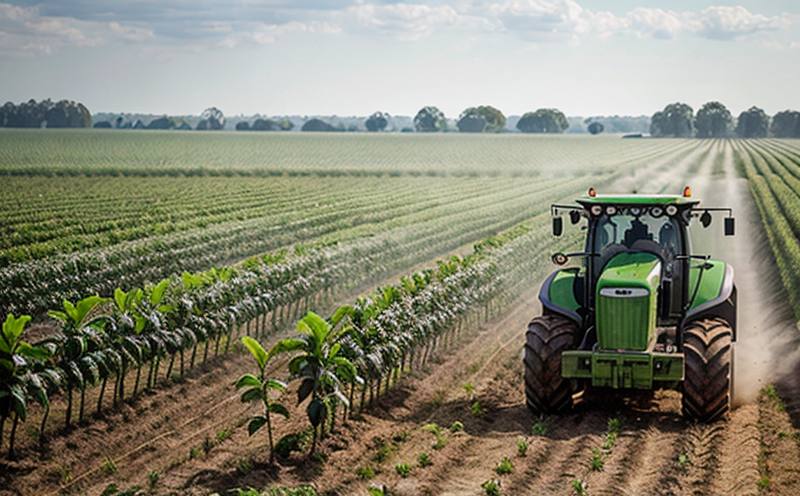GB T 5009 Pesticide Residue Testing in Agricultural Products
The GB T 5009 series of standards is a set of methods used for the determination of pesticide residues in foodstuffs, beverages, and other agricultural products. Among these, GB/T 5009.19 specifically addresses the residue testing of pesticides in agricultural products.
This test method provides precise protocols to identify and quantify pesticide residues in various types of agricultural products, including fruits, vegetables, grains, oils, and more. It is a critical tool for ensuring food safety and compliance with international regulatory standards.
The process involves multiple steps from sample collection to final analysis. Samples are first prepared according to specified protocols to ensure accurate results. This may include washing, slicing, or grinding the samples depending on their type.
Once prepared, the samples undergo extraction processes using solvents that effectively remove pesticide residues without interfering with subsequent analyses. The extracts are then analyzed via chromatographic techniques such as gas chromatography-mass spectrometry (GC-MS) and liquid chromatography-tandem mass spectrometry (LC-MS/MS).
The accuracy of these methods ensures reliable identification and quantification of even trace amounts of pesticides. This is crucial not only for producers but also for regulatory bodies seeking to protect public health.
Compliance with GB/T 5009.19 helps prevent the presence of harmful levels of pesticides in agricultural products, thereby ensuring food safety standards are met. It plays a vital role in maintaining trust between consumers and suppliers by providing transparency about product quality.
The importance of this testing cannot be overstated given the potential risks associated with excessive pesticide use. By adhering to these stringent guidelines, laboratories like ours contribute significantly towards safeguarding both human health and environmental sustainability.
Our laboratory follows all prescribed procedures meticulously ensuring accurate results every time. From initial sample handling through final analysis, we maintain strict quality control measures at each stage of the process.
Applied Standards
| Standard | Description |
|---|---|
| GB/T 5009.19 - Determination of Pesticide Residues in Agricultural Products | This standard specifies the procedure for determining pesticide residues in agricultural products. |
| ISO/IEC 17025:2017 - General Requirements for the Competence of Testing and Calibration Laboratories | Absorbed by GB/T 5009, ensuring our laboratory adheres to international best practices. |
Scope and Methodology
The scope of this testing includes but is not limited to fruits, vegetables, grains, oils, and other processed agricultural products. The methodology involves several key steps:
| Step | Description |
|---|---|
| Sample Collection | Selecting representative samples from different lots or batches. |
| Sample Preparation | Washing, slicing/grinding, and other necessary treatments to prepare the sample for extraction. |
| Pesticide Extraction | Using appropriate solvents like acetone or methanol to extract pesticides from the samples. |
| Cleanup and Concentration | Removing impurities and concentrating the extracts if necessary before analysis. |
| Analytical Techniques | Performing GC-MS or LC-MS/MS to identify and quantify pesticide residues accurately. |
Industry Applications
The application of GB/T 5009.19 is extensive across various sectors:
In agriculture, it helps farmers and manufacturers comply with local and international regulations regarding pesticide use.
For food processors and distributors, this testing ensures that the products they handle meet safety standards before reaching consumers.
Regulatory bodies also rely on these tests to monitor compliance and ensure public health protection.
R&D departments within companies often use such data to optimize formulations while minimizing risk.





